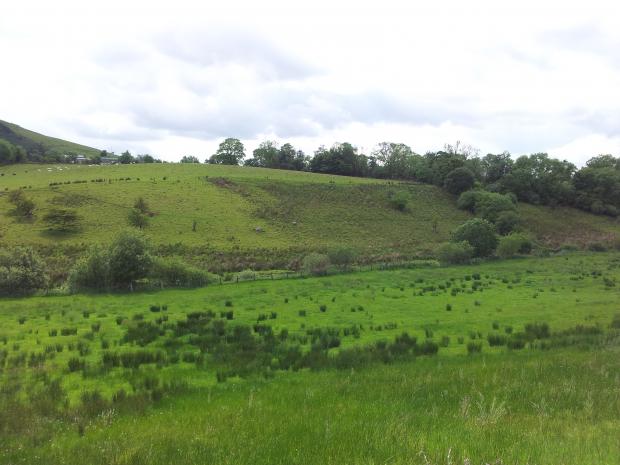
This area is of special scientific interest because of its complex pattern of species-rich dry and wet grassland and the gradations between these habitats. Species-rich grassland tends to occur only where land management is not intensive, in particular where traditional farming practices have been maintained. As a result, it is not a widespread habitat in Northern Ireland and is often fragmented, consisting of individual fields, parts of fields or banks. Species-rich grasslands, like those found at Castle River Valley, are a particularly scarce resource in Northern Ireland.
The area is composed of seven steeply sloping field parcels with a northerly aspect. There is a small associated area of scrub in one field parcel which is complemented by a network of mature intact hedgerows. The combination of topography and the related soil hydrology has resulted in a relatively complex range of grassland communities within a small area. These vary from dry grassland to wet grassland, with moderate base-rich flushing occurring throughout the area. The drier vegetation communities include lowland meadow, characterised by the presence of crested dog’s-tail and common knapweed, and as they gradually become wetter they grade into rush pasture, which is characterised by sharp-flowered rush and common marsh-bedstraw. This subtle gradation is generally related to soil moisture within the field parcels.
Related articles
- ASSI Guidance for Public Bodies/Competent Authorities
- Coastal Areas of Special Scientific Interest
- Conservation Management Plans (CMPs)
- European Marine Sites - Marine Special Areas of Conservation and Special Protection Areas
- Introduction to Conservation Management Plans (CMPs) for Northern Ireland’s Special Areas of Conservation
- Marine Conservation Zones
- Marine Protected Areas
- Marine Ramsar sites
- Portrush Coastal Zone
- Special Areas of Conservation
- Special Areas of Conservation for Harbour porpoise
- Special Protection Areas
